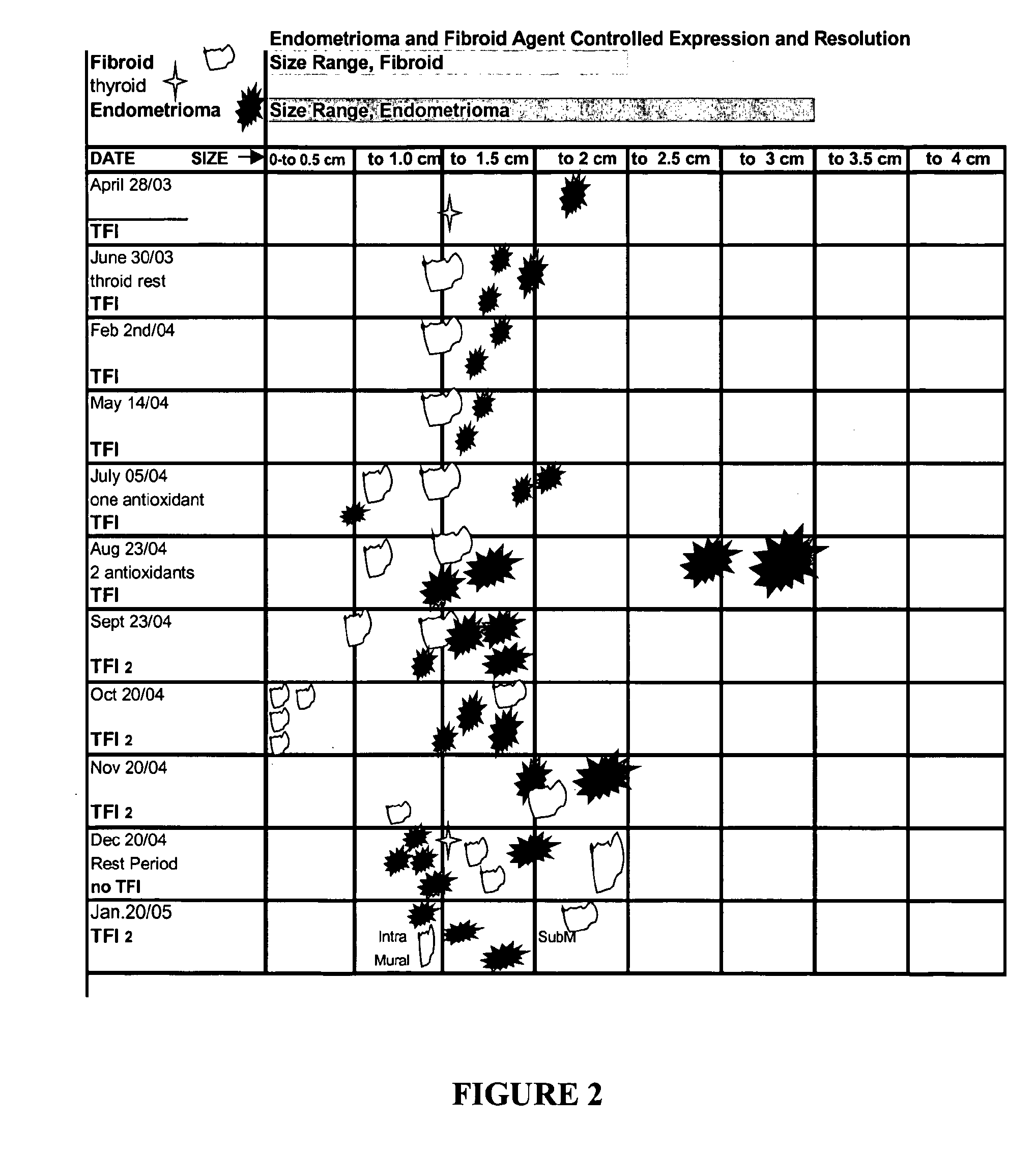Method of detecting and treating allogenic cells responsible for endometriosis
a technology of endometriosis and allogenic cells, applied in the field of allogenic cells, can solve the problems of inability to account for endometriosis found in women, significant pain and suffering, and threat to both life and continued fertility, so as to improve treatment, determine or improve the efficacy of pathology treatment, and improve the effect of treatmen
- Summary
- Abstract
- Description
- Claims
- Application Information
AI Technical Summary
Benefits of technology
Problems solved by technology
Method used
Image
Examples
examples
[0088]The term “TFI” refers to thermodynamically free iodine and the term “TFI2” refers to thermodynamically free iodine used in combination with an adjuvant, such as an apoptosis mediator. In the results discussed herein, TFI2 included treatment with the apoptosis mediator, aspirin. “Counter therapy” refers to treatment involving use of compounds that down-regulate the CMI, such as antioxidants. Antioxidants used here were vitamin E and zinc.
[0089]Although the ESB cell is commensal-like and not recognized by the CMI, endometriomas seemed to be resolved in a sequential manner, possibly for one of the following four reasons:
[0090](i) the ESF cells have sufficient difference in genetics from their host and are unprotected by the commensal state so that the CMI attacks them when possible, but is usually prevented by iron homeostasis blocking macrophage antigen creation and presentation;
[0091](ii) for some reason under some rare conditions at the start of the monthly grow-out cycle some...
PUM
| Property | Measurement | Unit |
|---|---|---|
| time | aaaaa | aaaaa |
| diameter | aaaaa | aaaaa |
| diameter | aaaaa | aaaaa |
Abstract
Description
Claims
Application Information
 Login to View More
Login to View More - R&D
- Intellectual Property
- Life Sciences
- Materials
- Tech Scout
- Unparalleled Data Quality
- Higher Quality Content
- 60% Fewer Hallucinations
Browse by: Latest US Patents, China's latest patents, Technical Efficacy Thesaurus, Application Domain, Technology Topic, Popular Technical Reports.
© 2025 PatSnap. All rights reserved.Legal|Privacy policy|Modern Slavery Act Transparency Statement|Sitemap|About US| Contact US: help@patsnap.com


